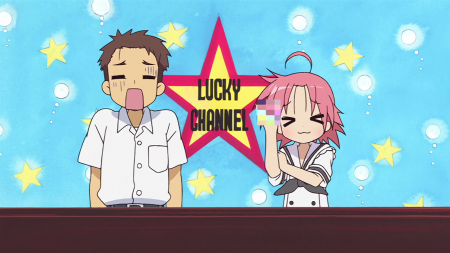Ask John: Is Anime Now Censoring the Middle Finger?

Question:
DBZ had a number of instances where characters would flip the middle finger in the anime. However, Toei (which also made DBZ) censored a middle finger scene in One Piece that originally has been present in the manga. Is there a new trend for anime production companies to censor “giving the bird”? If so, what happened to change Japanese sensibilities on this issue?
Answer:
Saying that anime has become more conservative during the past twenty years would be overly reductive; however, a variety of circumstances have affected anime production and affected what does and doesn’t now appear commonly in varying types of anime. Broadly speaking, popular, mainstream anime has become a bit more conservative and restrained while otaku-oriented anime has become much bolder but, at the same time, needed to reign itself in farther.
The golden age of anime remains well known for its prevelance of shower scenes. Gratuitous nudity was especially common during the 1980s, even in popular, mainstream anime. Viewers got to see leading female characters like Lynn Minmei and Ranma Saotome topless or nude. However, an unobscured glimpse of popular female characters like Nami, Shana, Lucy Heartfilia, or any of the heroines of Rinne no Lagrange in today’s anime seems unimaginable.
During the 1990s, anime began to distinctly separate between mainstream anime and otaku-oriented anime broadcast very late at night or aired exclusively on cable or satellite TV networks. As that split occured, mainstream anime became more conservative, including less nudity and sex while late-night otaku anime became more provocative. However, distinctly in 2004 the Girls Bravo TV series became an initial point of controversy when its abundant nudity was digitally censored even on cable networks, earning it the nickname “Steam Girls.” Since then otaku-oriented TV anime has become more daring and provocative, for example, see titles like Rosario+Vampire, Air Gear, Gantz, School Days, High School of the Dead, and Seikon no Qwaser that have been censored even on premium TV because these shows are now so much more graphic than even provocative golden era broadcast anime.
Increasing Japanese conservatism extends beyond graphic nudity. As recently as last month episodes of the Gokujo ~Gokurakuin Joshi Koryo Monogatari~ television series were pulled from broadcast not because they included any graphic sex, violence, or nudity, but simply because they revolved around subjects deemed impolite for public discussion, like public nudity.
The middle finger does periodically appear in anime, although it seems less common now that it was even just a few years ago. Examples appear in 90’s and 2000’s anime including Excel Saga, GTO, R.O.D. the TV, Samurai Champloo, and Black Lagoon, to name a few. But in more recent anime, like Lucky Star, it’s censored. Characters do it in older mainstream shonen anime including Dragon Ball Z and Yu Yu Hakusho, but instances have been excluded from the current One Piece anime. As anime production becomes increasingly concerned about commercial viability and viewer reaction, an increasing number of anime need to consideration changing standards of acceptability in society and subtely avoid scenes or content that may negatively impact sales or exposure. As Japanese society itself, like America, has become more consious of socially and morally responsible and inoffensive content in public discourse and media, anime has needed to respond to that evolving expectation. Doubtlessly we’ll continue to see appropriate character behavior and displays in home video anime and anime aimed at hardcore niche audiences that expect and demand such content. But over the decades mainstream Japanese anime has become a bit more conservative, and that trend may continue in the future.
Add a Comment
You must be logged in to post a comment.


My assumption is it’s a gimmick to boost sales for the home video releases.